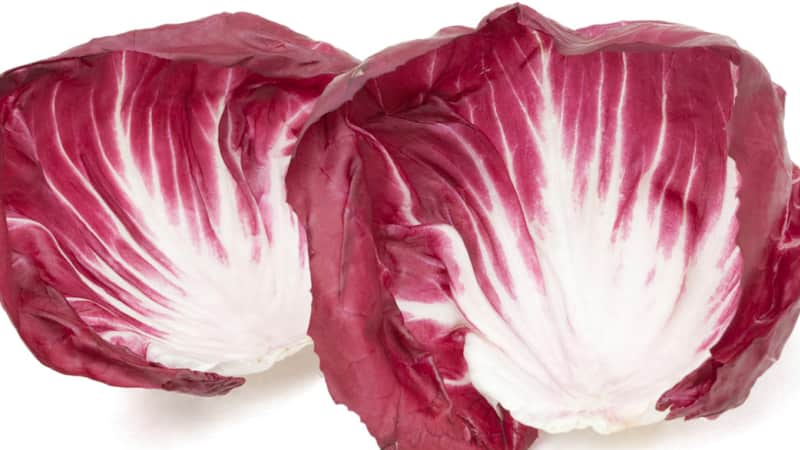For the past month or so, Becky Sideman has been growing radicchio. “My basement has this adorable little garden full of radicchio that are growing in it,” said Sideman. The setup is nothing fancy, mostly 1-gallon nursery pots sitting on boards supported by 5-gallon buckets, a foot off her basement’s gravel floor. The pots are deep, about 6 inches across, and each one holds three or four roots repotted from her garden. Every few days she waters them and then leaves them to grow. In the dark.
When Growing Radicchio, There Is Beauty in Darkness
Published Mar. 30, 2021.

“In Italian, the word is ‘imbianchimento,’ which means ‘whitening,’” said Jason Salvo, owner of Local Roots Farm in Duvall, Washington—thousands of miles from radicchio’s original home in northern Italy but with a similar climate. Salvo and his wife, Siri Erickson‑Brown, have been growing radicchio there for about 15 years. “Except that’s not really what happens; they don’t turn white, so I think the accurate word would be ‘forcing.’”
Forcing, also referred to as blanching, means growing a plant in the absence of light. Radicchio’s stunning red-and-white leaves are a result of this technique. Some varieties grow this way naturally; others need intervention and must be actively forced.
For Rosso di Chioggia (the dense, red ball often referred to as simply radicchio), forcing occurs naturally. As it grows in the field, the older outer leaves wrap themselves around the heart of the plant, hiding the innermost leaves from the sun.
Rosso di Treviso Tardivo—the gorgeous squid-like radicchio—is an actively forced variety. The plants are dug up, generally after a frost (which tells the plant that it’s time to go dormant), and brought indoors, whether in a dark shed or barn or a more controlled greenhouse environment, to force new growth out of energy reserves in the root.
Or in Sideman’s case, the plants are brought to the basement. Sideman, a researcher and extension specialist in fruit and vegetable production at the University of New Hampshire, had avoided radicchio until recently. “I have cheerfully come back to it, thinking, ‘They’re just so beautiful, I should eat these bitter things!’”
When chlorophyll-laden plant tissue is exposed to the ultraviolet rays in sunlight, she said, it photosynthesizes and produces stress-related compounds that can increase a plant’s bitterness. When you exclude light, you limit photosynthesis and avoid the production of some of those bitter compounds. What’s more, you change the plant’s color and may also change its nutritional profile.
For radicchio, the new leaves are milder and crunchier than they otherwise would be, though they are still innately bitter. And while some plants, such as Belgian endive, turn white, radicchio turns white and red. “In a lot of plants, the anthocyanins—purple pigments—are upregulated when light hits the crop,” said Sideman. “But with radicchio, the anthocyanins are expressed really strongly inside the heads, unrelated to light exposure. It’s just really the chlorophyll, and the green pigments, that aren’t there.”
Forcing takes anywhere from one to four weeks, and when it’s over, you’d hardly recognize the plants as edible—sometimes, while the new inner leaves grow, the outer leaves rot. But for Brian Shipman, co-owner of Wild Roots Farm, near Portland, Oregon, the transformation is nothing short of magic. “You pull them out, process them, pull back all the slime, and at the heart you have beautiful food.”

